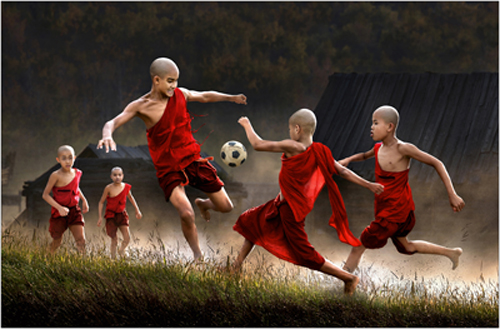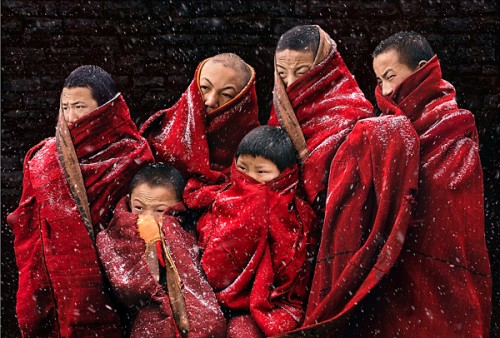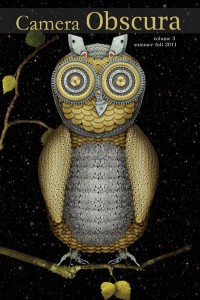Behind the Scenes
Interview with M.E. Parker of the Camera Obscura Journal of Literature & Photography
I’ve always been curious about the darkroom where literary magazines come together. This is a series of interviews engaging, talking, and sometimes annoying editors about their magazines. How did they come about, what do they hate about editing, and what do they love most about it? This is the second in the series and I talked with M.E. Parker of the Camera Obscura Journal of Literature & Photography. It’s by far one of the most beautiful literary magazines around with riveting photography that goes hand-in-hand with some amazing voices. Seriously, the covers kick ass and the stories rip you open from inside and your guts are hanging out and you smile, “Cheese,” for the camera because you want to capture that brief moment where inspiration bisects into awe and mesmerized nausea from having been split open. A brief description on their site states they are: “an independent literary journal and internet haunt featuring contemporary literary fiction & photography. Contributors include established, as well as, emerging writers and photographers.”
As a brief bio and introduction to M.E. Parker:
M.E. Parker is a writer, an editor, web designer, and a carpenter who imagines a world of wooden computers with leather bound keyboards. His short fiction has come up for air in numerous print publications and Internet haunts. He is the founding Editor of Camera Obscura Journal of Literature & Photography. www.meparker.com
***
PTL: When and how did you first come up with the idea of starting the Camera Obscura Journal of Literature and Photography?
M.E. Parker: As is often the case with grand notions conceived in the mental stupor of Belgian Monk brewed beer, I first envisioned a glorious, indescribable tome, pared the following day by the limits of funds, time, and logistics with a few basic principles to guide it. Mostly I wanted a writer and artist friendly venue where, not only contributors, but submitters as well, really do come first, and the stress of the submission process gives way to levity. And in the process my hope was that we create a great community and journal and have fun on the journey (we are still the only journal with a big red “Bug the Editor” button on the withdraw/submit page).
As the editor, I assembled a team not unlike selecting a crew for a heist:
Me – Captain and story wrangler.
Shane Oshetski – can deconstruct, analyze and ostracize any short story.
Tim Horvath – erudite lover of language and Borges, who might wear tweed as an old man.
Meredith Doench – appreciates variety, enjoys the flaws, offsets Shane.
Kate – my wife and incredible photographer, master negotiator, foiler of plots.
PTL: The photography in the magazine is just incredible. What goes into the selection/curating process for the photographs? Are most/all of them chosen from the Competition?

M.E. Parker: The photography does come from the competition for a variety of reasons. Rather than selecting artwork to showcase on the basis of appeal or to augment the writing as an accessory, I wanted a journal where the photography underwent the same editorial scrutiny and selection criteria as the writing without regard for prevailing aesthetic.
Our competition is based on print competitions where the judges rank photographs in numerous categories. We have selected five of those, technical merit, creativity, story, artistic merit, and light. After the competition closes, our photography editor, Kate, sometimes with others, scores each photograph in these categories. The photographs with the highest aggregate score move on to the judges, who are prominent photographers in their field. The panel usually has three judges who rank the photographs independently in these same criteria. A few float to the top numerically and the winner has the highest score.

PTL: Would you say the fiction selection process is influenced by the photographs chosen, and vice versa? Or do they just sort of organically build on top of each other?
M.E. Parker: An organic construction. The stories and photographs are independent of one another by design, the hope being to put the best of both together. Threads of similarity in the backs of our minds are inescapable though, so an aesthetic has emerged over time.
PTL: In the submission guidelines, it’s mentioned: “Your perception of reality is your truth, so whether you interpret it or render it completely, be sure to check the alleyways and the spaces between the cushions in your sofa.” With the proliferation of digital technology, literally everything can be captured, whether posting on YouTube or Instagram, or people sharing every detail on their blogs and twitter. How does a writer stand out in terms of their fiction? How does a photographer stand out with their photos?
M.E. Parker: Language that evokes, festers and pops, that forces the reader to read whatever happens next, even if that happens to be watching a clock or waiting for a shadow to shrink. The proliferation of writing and photography on the web sometimes makes it easier to stand out because there is often a discernible quality rift when the barrage of snapshots versus photographs.
PTL: On that note, can you highlight some of your favorite pieces from the last issue?
M.E. Parker: There was something I really liked about all of them or they wouldn’t have been included, but “When the World is Covered” did win the award for this issue. The stories span the spectrum. “Tunk” pushes right by, as though you are standing in the middle of the story, and whether you move out of the way or not you’ll still get smacked. “We are Full of Paradise” by contrast takes a volunteer from the audience, levitates them with ethereal language and walks away to let her fall. But I do enjoy everything that makes it into the journal.
PTL: If you were to make a general statement on the state of literature based on the type of submissions you get, what would it be?
M.E. Parker: There are a large number of good writers out there who deserve more credit than they are currently being given.
PTL: What are some of your favorite aspects of running Camera Obscura Journal? And on the inverse, the least favorite?
M.E. Parker: I really enjoy all the great short stories I get to consider and going through the photographs and designing the website and layout. Least, least, least favorite is dealing with the finances and distribution etc.
PTL: I’m really enjoying Bridge the Gap. In your own words, can you tell us about it?
M.E. Parker: Where the journal features photographs and stories independently, Bridge the Gap is intended to tie the two together. The process of choosing the photos is one that I enjoy, and a lot of thought does go into it. Writing a story that bridges one photograph with the next, without beating the reader over the head or being too subtle, too obvious, too whatever, (based on the submissions), is much harder to pull off than it sounds, but it makes for an interesting result. My aim is to for the reader/viewer to have a new experience. The secondary intention has always worked to some degree, to bring non-writers into the fold to take the challenge. We’ve had photographers, writers, kids, doctors, even a professional football player give it a try. So far writers win most of the time.
PTL: And for fun: if you knew that Earth was going to be destroyed and only one image could survive to represent who we are, what do you think that photo should be of?
M.E. Parker: Wow, that is bit more difficult than the standard, “if you were a tree what tree would you be.” I am going to say a photo of a clock. And I’ll leave that up to your interpretation.
***
Peter Tieryas Liu is the author of Watering Heaven (Signal 8 Press, 2012) and Bald New World (Perfect Edge Books, forthcoming). He has work published in places like the Evergreen Review, Indiana Review, New Letters, and ZYZZYVA. He rambles about his bad literary habits at tieryas.wordpress.com
Tags: Camera Obscura, M.E. Parker, Peter Tieryas Liu



[…] http://htmlgiant.com/behind-the-scenes/interview-with-m-e-parker-of-the-camera-obscura-journal-of-li… […]